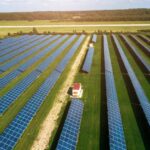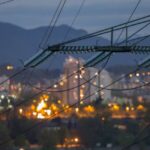Virtual Power Plants and Energy Equity: Addressing Socioeconomic Disparities

In today’s world, where discussions about climate change and social justice dominate headlines, the energy sector emerges as a pivotal arena for tackling these pressing issues head-on. Amidst this backdrop, a groundbreaking solution has emerged: virtual power plants (VPPs). These innovative systems aren’t just transforming the way we generate and distribute energy; they’re also offering a promising avenue for addressing the longstanding disparities in access to clean, dependable power. In this blog, we’ll take a deep dive into the convergence of virtual power plants and energy equity, uncovering the potential of this technology to pave the way for a fairer, more sustainable energy landscape.
Unpacking Energy Equity:
Energy equity, a cornerstone of social and environmental justice, revolves around ensuring that all communities have equitable access to clean, reliable energy resources. Yet, this ideal remains elusive for many marginalized groups, who often face barriers to accessing affordable and sustainable energy solutions. Unfortunately, many marginalized communities bear the brunt of environmental degradation and energy insecurity, facing higher energy costs, pollution-related health issues, and limited access to clean energy solutions.
Virtual Power Plants: A Catalyst for Change:
Virtual power plants offer a transformative approach to energy generation and distribution by leveraging a network of decentralized energy resources. These resources, which can include solar panels, wind turbines, battery storage systems, and demand response technologies, are aggregated and controlled through advanced software and communication systems. By optimizing the use of distributed energy assets, VPPs enhance grid stability, reduce reliance on fossil fuels, and lower energy costs for consumers.
Addressing Energy Poverty:
One of the most significant contributions of virtual power plants to energy equity is their potential to alleviate energy poverty. In many underserved communities, residents struggle to afford basic energy needs, leading to energy insecurity and diminished quality of life. VPPs offer a lifeline by enabling greater deployment of renewable energy resources, which tend to have lower operating costs than traditional fossil fuel-based generation. Additionally, VPPs can facilitate community-owned energy projects, empowering local residents to take control of their energy futures and reap the economic benefits of clean energy production.
Empowering Communities:
Central to the mission of virtual power plants is their potential to empower communities, both economically and environmentally. By democratizing energy production and ownership, VPPs enable local stakeholders to participate in the clean energy transition and reap the benefits. Community-owned solar projects, microgrids, and energy efficiency initiatives not only create jobs and stimulate economic growth but also foster resilience in the face of climate change and energy insecurity.
Tackling Energy Poverty:
Energy poverty, a harsh reality for millions worldwide, is a multifaceted issue with far-reaching consequences. Virtual power plants offer a lifeline by expanding access to affordable and reliable energy services, particularly in underserved areas. By leveraging renewable energy sources with lower operating costs, VPPs help alleviate the burden of high energy bills and reduce reliance on polluting fossil fuels. Moreover, community-based VPP projects can catalyze social cohesion and empower residents to take control of their energy futures.
Promoting Environmental Justice:
In the fight against environmental injustice, virtual power plants emerge as powerful allies, driving the transition to cleaner, healthier energy systems. By displacing fossil fuel-based generation and mitigating pollution, VPPs contribute to improved air quality, public health, and environmental resilience. Through targeted investments in disadvantaged communities, VPP initiatives prioritize environmental justice, ensuring that the benefits of clean energy are shared equitably.
As we confront the urgent challenges of climate change, energy insecurity, and social inequality, virtual power plants offer a beacon of hope and possibility. By addressing the root causes of socioeconomic disparities in energy access, VPPs pave the way for a more inclusive, resilient, and sustainable energy future. However, realizing this vision requires concerted efforts to prioritize equity, community engagement, and innovative policy solutions. As we embrace the transformative potential of virtual power plants, let us seize the opportunity to build a brighter, more equitable world for all.






